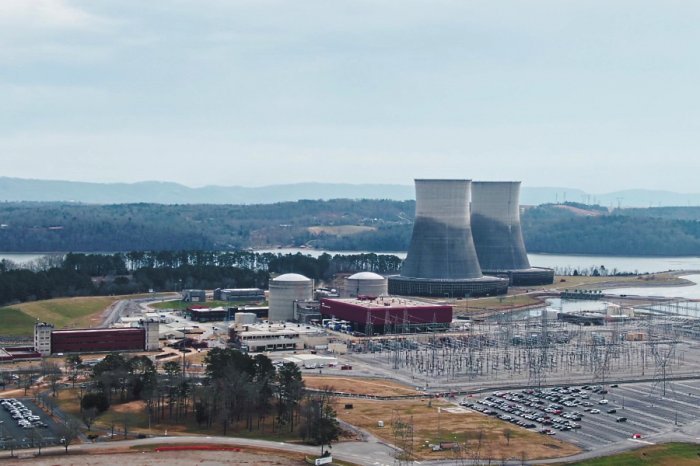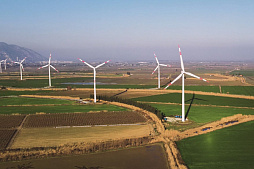After receiving the necessary documents (application form and project presentation), our team will try to review your request as soon as possible, and leading experts will offer the best options for project funding.
ESFC Investment Group helps corporate clients across the world in financing large business initiatives, investment loan structuring, exploring key strategies to achieve favorable outcomes for capital-intensive projects.
Understanding investment loan structuring
In essence, investment loan structuring is the art of designing loan terms and conditions to align with the goals and risk tolerance of investors, as well as the financial capabilities of borrowers.By employing strategies such as risk-based pricing, diversification, and effective communication, lenders can optimize their investment loan offerings and create mutually beneficial arrangements for all parties involved. A well-structured investment loan should provide a “win-win scenario” by optimizing returns for investors while mitigating potential risks.
This process requires a comprehensive understanding of various factors, including the following.
Borrower's financial profile
Investors must carefully analyze the financial health of particular company and its projects, creditworthiness, and repayment capacity. This includes reviewing the credit history, financial statements, cash flow projections, and existing debt obligations.Investment project viability
For loans intended for specific projects (such as real estate development or infrastructure expansion), lenders need to assess the viability and potential profitability of the project. This involves evaluating the project's feasibility, market demand, competitive landscape, and risks.Investor risk tolerance
Lenders must consider the risk tolerance of the investors participating in the loan. Some investment funds and more often private investors may be more conservative and prioritize capital preservation, while others may be willing to take on higher risks for potentially greater returns.Current market conditions
Overall macroeconomic and market conditions play a significant role in investment loan structuring. Lenders should consider factors such as interest rate trends, industry outlook, and macroeconomic indicators that could impact the borrower's ability to repay and the investor's potential returns. For example, stock market performance, GDP, business confidence index etc.Legal and regulatory framework
Compliance with relevant laws and regulations is essential for large investment projects. Lenders must structure their loans in accordance with securities laws, lending regulations, and consumer protection measures to ensure a legally sound transaction. For instance, large sums of money may be subject to increasingly tighter Anti-Money Laundering (AML) regulations.Investment objectives
Borrowers need to understand the objectives of the investors providing the funds. Some investors may be seeking short-term returns, while others may have longer investment horizons. The loan agreement terms should align with these objectives.Collateral and security
Assessing the quality and value of the collateral provided by the borrower is crucial for this type of deals. Collateral serves as a form of security for the loan, and its evaluation impacts the so called loan-to-value ratio and the overall risk profile of the investment.Exit strategies
Understanding how the borrower plans to repay the loan is is the first thing that is considered when making a financial decision. Lenders should evaluate the feasibility and viability of the exit strategy, whether it involves selling the project, refinancing, or generating sufficient cash flow.Relationship management
Investment loan structuring is not a one-size-fits-all approach. Instead, it requires a careful balancing act that takes into account the unique circumstances of each transaction. Building a strong relationship between both the borrower and the investor is essential for investment loan structuring.There are many scientific theories and various practical approaches to organizing effective interaction between the parties to an investment lending agreement. We can say with certainty that investment loan structuring is a dynamic process that involves analyzing borrowers' financial state, evaluating project feasibility and investor preferences, considering market dynamics and regulatory requirements.
A thorough investigating of these factors enables lenders to design loan terms that optimize risk and return for all parties involved.
Key elements of investment loan structuring
These refer to the fundamental elements that are involved in designing and organizing the terms and conditions of an investment loan.They are crucial for creating a loan arrangement that aligns with the needs and preferences of both the borrower and the investor while considering risk factors and regulatory requirements. Each component contributes to the overall structure of the loan and impacts its risk profile, return potential, and repayment dynamics.
The most important components of investment loan structuring typically include the following.
Loan amount
The loan amount is the total sum of money that the borrower requests from the private investors or investment funds. It represents the initial capital injection provided to fund the project or investment endeavor. It determines the scale and scope of the project the borrower can undertake.Table: Some factors affecting the amount of an investment loan
| Factors | Role and impact on the project |
| Financial needs of particular project | The loan amount is driven by the borrower's financing requirements. Borrowers should carefully assess the amount they need to successfully execute their project, covering expenses such as construction, equipment purchase, working capital, or other investment needs. |
| Investor expectations | For loans funded by multiple private investors, the loan amount should align with the expectations and preferences of these investors. Investors want to ensure that the loan amount is reasonable given the potential risks and returns. |
| Collateral and Loan-to-Value (LTV) ratio | The loan amount often correlates with the collateral provided by the borrower. Lenders assess the collateral's value to determine the appropriate loan-to-value ratio, which indicates the proportion of the loan amount relative to the collateral's value. |
| Feasibility and repayment | The loan amount should be realistic and feasible for the borrower to repay within the agreed-upon terms. Borrowers need to consider their cash flow projections and revenue generation capabilities to ensure they can meet repayment obligations. |
Loan term
The loan term refers to the duration over which the borrower is expected to repay the investment loan.The loan term is a critical factor that impacts various aspects of the investment, including the borrower's repayment schedule, the investor's expected returns, and the overall risk profile.
Table: Some factors to consider when determining the loan term
| Factors | Short description |
| Short-Term vs. Long-Term | Loan terms can vary from short-term (a few months to a couple of years) to long-term (years to decades). The choice of term depends on the nature of the investment, the project timeline, and the borrower's repayment capacity. |
| Risk and return | Shorter loan terms often entail lower risks for private investors, as they have a quicker opportunity to recoup their investment. Longer loan terms may offer more flexibility for borrowers but can involve higher risks due to longer exposure to changing market conditions. |
| Interest accumulation | The loan term directly affects the amount of interest that accumulates over the life of the loan. Longer loan terms result in more interest payments, which impacts the total cost of borrowing for the borrower and the total return for investors. |
| Project duration | Loan terms should align with the expected duration of the borrower's project. For example, a real estate development project with a longer construction timeline might require a longer loan term. |
| Repayment structure | The loan term affects the repayment structure. Longer-term loans might have amortization schedules that involve gradual repayment of both principal and interest, while shorter-term loans might involve interest-only payments with a balloon payment at the end. |
| Investor preferences | Investor preferences for the timing of returns can influence the choice of loan term. Some investors might prefer shorter-term investments for quicker access to returns, while others may be comfortable with longer-term commitments for potentially higher returns. |
Determining the appropriate loan amount and term requires careful analysis of the borrower's project, cash flow projections, and overall financial stability.
Lenders must balance the borrower's repayment capacity with the investor's desire for a reasonable return within a specific timeframe.
Interest rate
The interest rate is the cost of borrowing money and is typically expressed as a percentage of the loan amount.It represents the compensation that lenders receive for providing funds to borrowers. The interest rate plays a pivotal role in determining the financial burden on the borrower.
Table: Key points to consider when determining the interest rate in investment loan structuring
| Factors | Brief description |
| Determinants of interest rates | Interest rates are influenced by various factors, including the borrower's creditworthiness, prevailing market interest rates, inflation expectations, the lender's risk assessment, and the loan term. |
| Fixed vs. variable rates | Loans can have fixed interest rates, which remain constant throughout the loan term, or variable rates, which can change periodically based on an underlying reference rate (e.g., a benchmark interest rate like LIBOR or a national central bank rate). |
| Risk and reward | Higher-risk loans typically have higher interest rates to compensate private investors for taking on greater risk. Lenders assess the risk associated with particular project, credit history, and other factors to determine the appropriate rate. |
| Loan type | Different types of loans (long-term investment loan, working capital loan) might have varying interest rates due to the specific risks associated with each type of loan. |
| Investor returns | The interest rate also determines the returns that investors can expect to receive. Private investors and funds often expect higher interest rates for riskier loans to compensate for potential losses. |
| Market trends | Interest rates are influenced by broader economic conditions and central bank policies. Market interest rate trends can impact the competitiveness of loan offerings. |

Fees
Fees refer to the various charges and costs associated with obtaining and managing an investment loan.These fees can vary based on the type of loan, the lending institution, the borrower's profile, and the specific terms of the loan agreement.
Here are some common fees that may be involved in investment loan structuring:
1. Origination fee. This is an upfront fee charged by the lender to cover the costs of processing and originating the loan. It typically includes administrative expenses, credit checks, underwriting, and other initial processes. Origination fees are often calculated as a percentage of the loan amount. In the case of loans issued by private investors, this fee may be relatively low or non-existent.
2. Application fee. Some lenders require borrowers to pay an application fee when submitting a loan application. This fee covers the costs associated with reviewing the application and assessing the borrower's eligibility for the loan.
3. Underwriting fee. Underwriting involves evaluating the borrower's creditworthiness and risk profile. Lenders might charge a fee to cover the costs of this assessment, which includes reviewing financial documents, analyzing credit history, and determining the loan's terms.
4. Processing fee. A processing fee covers the administrative costs of processing the loan application, verifying information, preparing documentation, and facilitating the loan disbursement process. As in the previous cases, this is more applicable to traditional investment loans issued to commercial banks.
5. Due Diligence fee. For some complex loans, particularly those involving commercial real estate or business acquisitions, lenders might charge a due diligence fee to cover the costs of thorough research and investigation into the borrower's project or investment.
6. Legal and documentation fees. These fees cover the costs of legal documentation, including drafting loan agreements, security documents, and other legal contracts necessary for the loan transaction.
7. Commitment fee. In cases where the loan terms are negotiated over a period of time, a commitment fee might be charged to the borrower to secure the lender's commitment to providing the loan under specific terms.
8. Closing fee. This fee is associated with the finalization of the loan transaction. It covers the costs of administrative work, record-keeping, and coordination required to complete the loan agreement.
9. Prepayment penalty. Some loans include a prepayment penalty, which is a fee charged to borrowers if they repay the loan before the specified maturity date. The penalty compensates the lender for potential interest income they might lose due to early repayment.
10. Late payment fee. Borrowers might be subject to late payment fees if they miss scheduled loan payments. These fees incentivize timely repayment and help offset administrative costs associated with managing delinquent accounts.
11. Renewal or extension fee. If borrowers seek to renew or extend the loan term beyond the initial agreement, a renewal or extension fee might be charged to cover administrative costs related to processing the renewal.
12. Servicing fee. For investment loans serviced by third-party servicing companies, borrowers might be required to pay a servicing fee to cover the costs of loan administration, payment collection, and communication with borrowers.
It's important for borrowers to thoroughly review the loan agreement and its associated fees before committing to the loan.
Lenders should provide clear and transparent information about these fees to ensure that borrowers fully understand the costs involved in the loan transaction.
Collateral and security
Collateral and security play a crucial role in investment loan structuring, as they provide lenders with a form of protection against the risk of borrower default.Collateral is an asset that the borrower pledges to secure the loan, while security arrangements outline how the lender can access and liquidate the collateral if the borrower fails to meet their repayment obligations.
Common types of collateral include the following:
1. Real estate. Real property such as land, industrial and commercial buildings, or residential homes can serve as collateral for loans. Real estate collateral is often preferred due to its relatively stable value and potential for appreciation.
2. Equipment and machinery. In business loans, equipment and machinery can be used as collateral. This is particularly common in industries where specific equipment is essential.
3. Inventory. Businesses with substantial inventory can use it as collateral. The value of the inventory is evaluated to determine its contribution to securing the loan.
4. Accounts receivable. In certain cases, outstanding invoices or accounts receivable can be pledged as collateral. This is common in industries with regular invoicing cycles.
5. Investment portfolios. Borrowers with solid investment portfolios might use their financial securities, stocks, bonds, or other investment instruments as collateral.
The choice of collateral and its valuation are crucial in determining the risk profile of the loan. Lenders need to assess the quality and liquidity of the collateral to ensure adequate protection.
Security arrangements outline the legal framework governing how collateral is managed and accessed in the event of borrower default. These arrangements provide lenders with the ability to recover their investment by selling the collateral.
Below are some key elements of security arrangements:
1. Lien. A lien is a legal claim that the lender has over the collateral. It gives the lender the right to take ownership of the collateral if the borrower defaults.
2. Security agreement. This is a contract that outlines the terms of the security arrangement, including details about the collateral, the lender's rights, and the borrower's responsibilities.
3. UCC financing statement. In many jurisdictions, lenders file a Uniform Commercial Code (UCC) financing statement with relevant authorities to declare their interest in the collateral.
4. Default and repossession. The security arrangement specifies the conditions under which the lender can take possession of the collateral due to borrower default.
5. Disposal of collateral. If the borrower defaults, the lender can sell the collateral to recover the outstanding debt. The security arrangement should outline the process for selling the collateral and distributing the proceeds.
Collateral and security arrangements significantly impact the terms of the investment loan, including interest rates and loan-to-value ratios. The value and liquidity of the collateral directly affect the level of risk for lenders and investors.
It's important for both lenders and borrowers to thoroughly understand the collateral and security arrangements outlined in the loan agreement, as they play a critical role in managing the potential risks associated with the project.
Repayment structure
Structuring the loan repayment schedule involves balancing the borrower's cash flow capabilities with the investor's desire for periodic returns.Options include fixed or variable interest payments, regular amortization, balloon payments, or interest-only periods.
The repayment schedule in investment loan structuring outlines the specific timeline and amounts of payments that the borrower is required to make to the lender or investors. It provides a detailed breakdown of how the loan will be repaid over the course of its term. The repayment schedule includes information about the timing, frequency, and composition of payments, allowing both borrowers and lenders to track the progress of the loan and manage their financial commitments.
Table: Elements of the payment schedule in the context of structuring investment loans
| Elements | Description and significance |
| Timing of payments | The repayment schedule specifies the start date of the loan and the dates on which subsequent payments are due. The timing can be aligned with the borrower's revenue cycle and the expected generation of cash flows. |
| Frequency of payments | The schedule always indicates how often payments are due, such as monthly, quarterly, semi-annually, or annually. The frequency can influence the size of individual payments and the overall cash flow impact on the borrower. |
| Payment amounts | Each payment is broken down into its components: interest and principal. For amortizing loans, the interest portion decreases over time as the outstanding principal is repaid. |
| Total payment amount | The schedule provides the total amount due for each payment. This is actually the sum of the interest and principal portions. |
| Amortization table | For amortizing loans, an amortization table is often included in the repayment schedule. This table details the breakdown of each payment's interest and principal components and shows the declining outstanding balance over time. |
| Balloon payment (if applicable) | If the investment loan includes a balloon payment at the end of the term, the repayment schedule indicates the amount of the final payment. Borrowers should be prepared to make this larger payment as part of their exit strategy. |
| Prepayment and penalties (if applicable) | If there are prepayment options or penalties, these terms are outlined in the repayment schedule. Borrowers should understand whether they can make extra payments or repay the investment loan early without penalties. |
| Grace period and late payment penalties | The schedule might also indicate whether there is a grace period before late fees are applied for missed payments. It also outlines the penalties for late payments. |
| Total repayment amount | The repayment schedule provides the total amount that the borrower will repay by the end of the loan term, including both principal and interest payments. |
| Consideration of interest rate changes | If the loan has a variable interest rate, the repayment schedule might include calculations for potential changes in interest rates, showing the impact on payment amounts. |
| Alignment with investment horizon | The repayment schedule should align with the borrower's investment horizon and exit strategy. If the borrower expects to generate revenue or complete the project before the loan matures, the schedule should accommodate these factors. |
| Transparency and communication | A clear repayment schedule is essential for maintaining trust between lenders and borrowers. Investors, lenders, and borrowers all rely on the repayment schedule to understand the loan's financial impact and track the progress of repayment. |
Strategies for effective investment loan structuring
Three key strategies, namely risk-based pricing, diversification, and effective communication are considered essential in investment loan structuring. By implementing these strategies, businesses can create a balanced and well-structured investment loan portfolio.1. Risk-Based Pricing
Risk-based pricing is a strategy where lenders assess the level of risk associated with a borrower and adjust the terms of the loan, including interest rates and fees. This strategy helps lenders align the cost of borrowing with the borrower's creditworthiness and the riskiness of the investment.• Risk assessment: Lenders analyze the borrower's credit history, financial statements, collateral, and other relevant factors to evaluate the borrower's risk profile.
• Tailored terms: Based on the risk assessment, lenders offer loan terms that reflect the level of risk. Higher-risk borrowers might receive higher interest rates and fees to compensate for potential defaults, while lower-risk borrowers might benefit from more favorable terms.
• Balancing risk and reward: Risk-based pricing allows lenders to manage their risk exposure effectively. It ensures that borrowers with strong creditworthiness are rewarded with lower costs of capital.

2. Resource diversification
Diversification is a strategy that involves spreading investment funds across multiple loans or projects to reduce risk. In the context of investment loan structuring, lenders and investors diversify their portfolios by funding a variety of projects with different risk profiles.• Portfolio management: Lenders and investors allocate funds to a mix of loans across different industries, geographies, and risk levels.
• Risk mitigation: Diversification helps mitigate the impact of potential defaults on individual loans. Even if some loans underperform, the overall portfolio remains balanced.
• Enhanced Returns: By diversifying across different types of investments, lenders and investors can achieve a balanced blend of potential returns while managing risks.
3. Effective communication
Effective communication is crucial throughout the investment loan lifecycle. Clear communication helps build trust, manage expectations, and address any concerns that parties might have.• Transparency: Lenders provide borrowers and investors with clear information about the terms, conditions, fees, and risks associated with the loan.
• Updates and reporting: Regular updates on project progress, financial performance, and other relevant information keep all parties informed about the investment's status.
• Risk disclosure: Lenders disclose potential risks associated with the investment upfront, enabling borrowers and investors to make informed decisions.
• Resolution of issues: Effective channels help address issues promptly. Borrowers can communicate challenges they face, and lenders can offer guidance or solutions.
• Post-investment communication: After funding, ongoing communication helps track loan performance, address any changes, and discuss potential refinancing or modifications.
Effective investment loan structuring involves carefully designing the terms, conditions, and repayment mechanisms to align with the needs of both borrowers and investors while managing risks.
The following are critical elements to consider when developing an effective strategy for structuring investment loans.
| Strategy elements | General recommendations |
| Professional Due Diligence | Financial team should conduct comprehensive due diligence on the borrower's financial health, business plan, and project details. This helps assess the feasibility of the investment and the borrower's ability to repay the loan. It is also important to evaluate the borrower's creditworthiness, collateral value, and exit strategy to ensure they are aligned with the loan's terms. |
| Customized loan solutions | Another important task is to tailor the loan terms to the specific investment project and financial circumstances. One-size-fits-all approaches may not suit every investment scenario. The borrower's industry, risk profile, and revenue generation potential when determining the loan amount, interest rate, and repayment structure should be considered. |
| Clear risk assessment | Financial team should also identify and assess potential risks associated with the investment, such as market volatility, project delays, and borrower credit risk. It develops risk mitigation strategies, including collateral requirements and financial covenants, to protect both lenders and investors. |
| Appropriate loan amount and LTV ratio | At the very beginning it is important to determine a suitable loan amount that meets the borrower's needs while maintaining a reasonable loan-to-value ratio. LTV ratio should strike a balance between providing adequate security for lenders and ensuring borrowers have a stake in the project's success. |
| Balanced interest rate | Optimal interest rate reflects the risk level of the investment. Higher-risk projects might warrant higher interest rates to compensate lenders and investors for potential losses. Financial team should consider market interest rates, inflation expectations, and the borrower's credit history when determining the interest rate. |
| Flexible repayment structure | In the context of investment loan structuring, it is crucial to tailor the repayment structure to align with the borrower's cash flow projections. For example, seasonal businesses might benefit from a flexible repayment schedule that accommodates revenue fluctuations. However, it may be difficult to choose between amortizing, interest-only, or balloon payment structures based on the borrower's project timeline and exit strategy. |
| Exit strategy alignment | Ensuring the repayment schedule and investment loan term align with the borrower's exit strategy. For example, a residential real estate development project might need a longer loan term to match the expected sale timeline. |
| Transparency and communication | Maintaining transparent communication with borrowers and investors throughout the loan lifecycle. Regular updates on project progress and financial performance build trust and manage expectations. |
| Ability to adapt to a changing environment | Including provisions in the loan agreement that allow for adjustments if unforeseen circumstances arise. Creating contingency plans to address potential disruptions to the project or cash flow. |
| Legal and regulatory compliance | Ensuring the loan structure adheres to all laws, regulations, and industry standards. Consulting legal experts to draft loan agreements, security documents, and other contractual elements. |
| Scenario analysis and stress testing | Conducting scenario analysis and stress testing to assess how changes in market environment and project performance could impact the borrower's ability to repay the loan. It is important to use this information to develop optimal strategies for managing potential adverse scenarios. |
| Investor alignment | If the investment project involves multiple investors, financial team should ensure that the loan structure aligns with their risk tolerance, return expectations, and investment horizons. Providing investors with clear information about the loan's terms and the associated risks. |
As we can see, effective investment loan structuring requires a comprehensive approach that takes into account the borrower's needs, project specifics, investor preferences, and risk management strategies.
Balancing these factors while maintaining transparent communication and compliance with regulations is essential for creating a loan structure that benefits all entities involved.




























